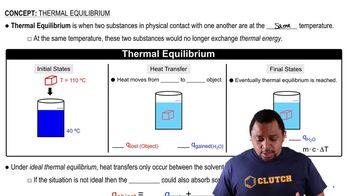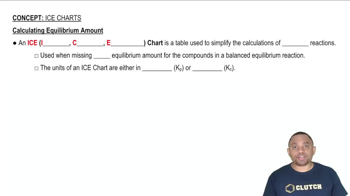Here are the essential concepts you must grasp in order to answer the question correctly.
Equilibrium Constant (Kp)
The equilibrium constant (Kp) is a numerical value that expresses the ratio of the partial pressures of the products to the reactants at equilibrium for a given reaction at a specific temperature. For the reaction ClF₃(g) ⇌ ClF(g) + F₂(g), Kp = 0.140 indicates that at equilibrium, the ratio of the partial pressures of ClF and F₂ to that of ClF₃ is constant. This concept is crucial for determining the equilibrium state of the system.
Recommended video:
Equilibrium Constant Expressions
Initial Conditions and Changes at Equilibrium
In this problem, we start with an initial partial pressure of ClF₃ at 1.47 atm and no products present. As the reaction proceeds towards equilibrium, the partial pressures of ClF₃ will decrease while those of ClF and F₂ will increase. Understanding how to set up the initial conditions and the changes that occur as the system reaches equilibrium is essential for calculating the final partial pressures.
Recommended video:
ICE Table (Initial, Change, Equilibrium)
An ICE table is a tool used to organize the initial concentrations (or pressures), the changes that occur as the reaction proceeds, and the equilibrium concentrations (or pressures). For this reaction, the table will help track the initial pressure of ClF₃, the decrease in its pressure, and the corresponding increases in the pressures of ClF and F₂. This systematic approach is vital for solving equilibrium problems accurately.
Recommended video:
ICE Charts and Equilibrium Amount




